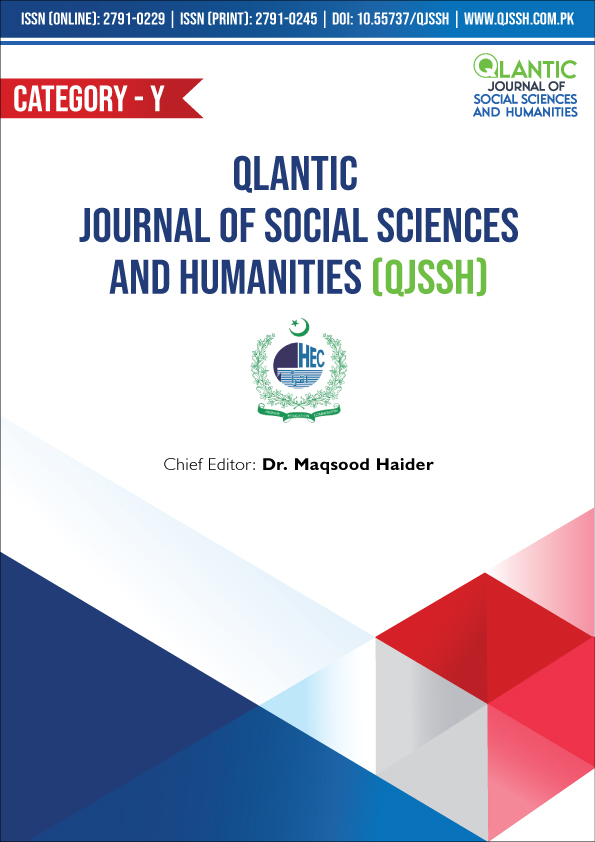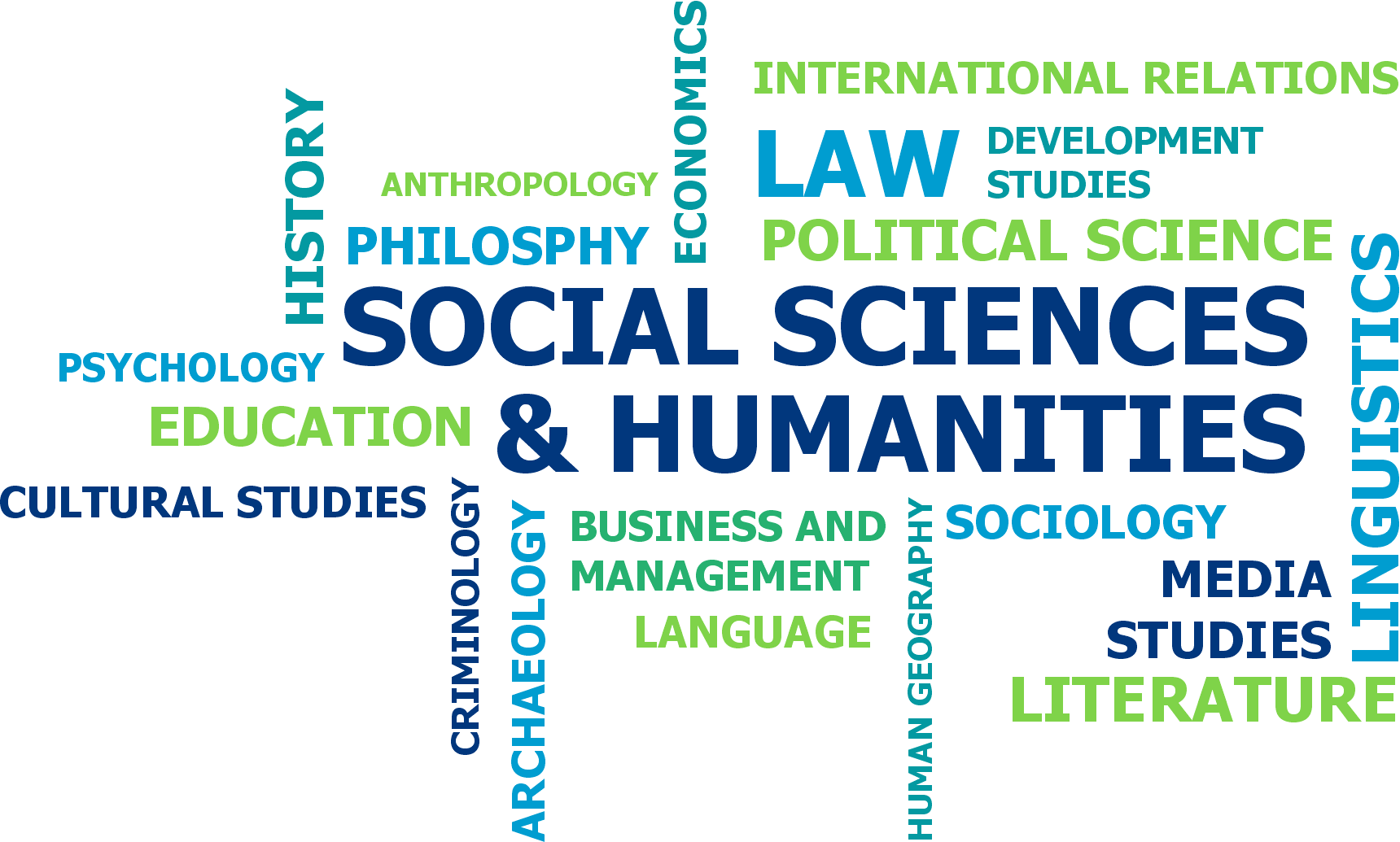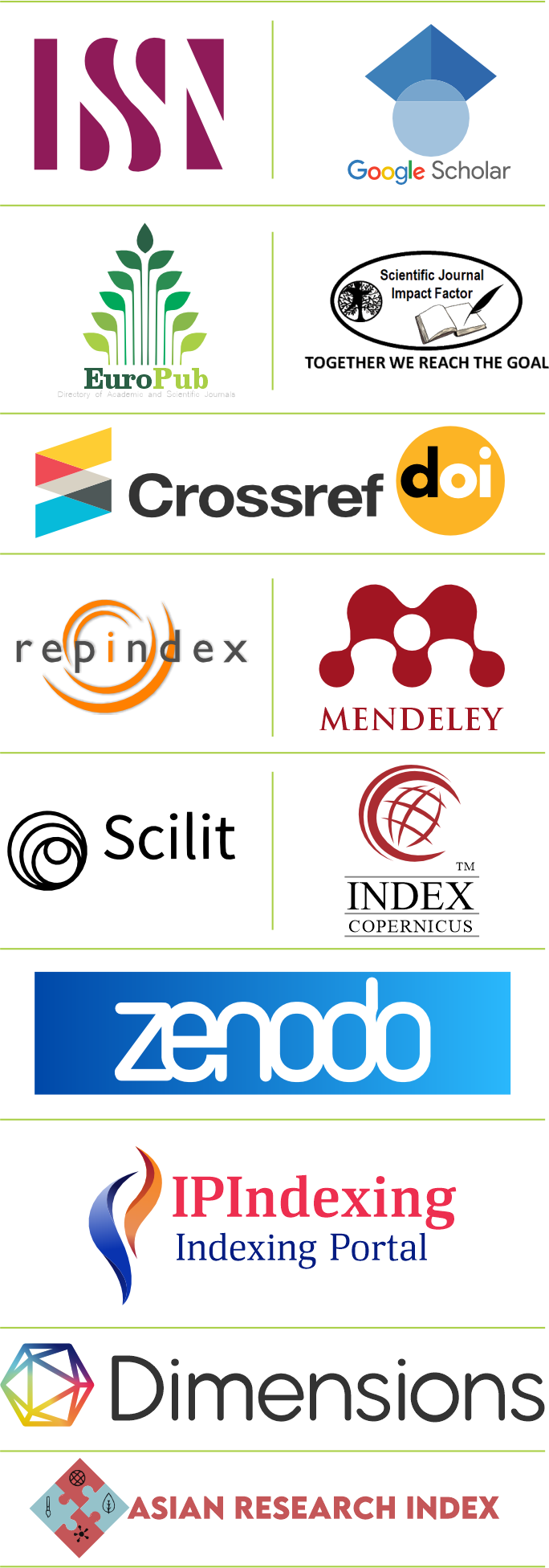Assessing Prospective Science Teachers’ Creative Thinking Ability to Solve Environmental Issues at Higher Education
DOI:
https://doi.org/10.55737/qjssh.vi-i.25314Keywords:
Creative Thinking Ability, Environmental Sciences and Creativity, Torrance Test of Creative Thinking (TTCT)Abstract
This research work intends to assess the creative thinking abilities of prospective science teachers using a modified form of the essay-type Torrance Test of Creative Thinking (TTCT) named the Tayyaba Creative Thinking Ability Test (TCAT). This test measured four key indicators of creativity: Fluency, Flexibility, Originality, and Elaboration. A purposive sampling technique was adopted, and a sample of 20 students completed the test, and their responses were evaluated using a 5-point rubric. Descriptive statistics revealed that students performed strongest in Originality (mean = 3.85) and Fluency (mean = 3.75), while Flexibility (mean = 3.15) emerged as the weakest indicator. Inferential statistics, including correlation analysis, demonstrated strong positive relationships between Fluency and Originality (r = 0.72, p < 0.01) and Originality and Elaboration (r = 0.70, p < 0.01), highlighting the interconnected nature of these skills. Validity was established through the expert's opinion, and reliability analyses indicated acceptable internal consistency (Cronbach's α = 0.78). The findings suggest that while students excel in generating innovative ideas, they struggle with adopting diverse perspectives. The findings reveal that while prospective science teachers excel in generating innovative ideas (Originality) and producing multiple solutions (Fluency), they face significant challenges in adopting diverse perspectives (Flexibility). This gap suggests a need for targeted educational interventions to enhance perspective-shifting skills, which are critical for addressing complex environmental issues. The strong correlations between Fluency, Originality, and Elaboration further emphasize the interconnectedness of these creative thinking dimensions, suggesting that fostering one skill may positively influence others.
References
Acar, S., & Runco, M. A. (2019). Divergent thinking: New methods, recent research, and extended theory. Psychology of Aesthetics, Creativity, and the Arts, 13(2), 153-158. https://doi.org/10.1037/aca0000231
Acar, S., Berthiaume, K., Grajzel, K., Dumas, D., Flemister, C. “., & Organisciak, P. (2021). Applying automated originality scoring to the verbal form of Torrance tests of creative thinking. Gifted Child Quarterly, 67(1), 3-17. https://doi.org/10.1177/00169862211061874
Alabbasi, A. M., Paek, S. H., Kim, D., & Cramond, B. (2022). What do educators need to know about the Torrance tests of creative thinking: A comprehensive review. Frontiers in Psychology, 13. https://doi.org/10.3389/fpsyg.2022.1000385
Alacapinar, F. G. (2013). Grade level and creativity. Eurasian Journal of Educational Research, 13(50), 247–266. https://eric.ed.gov/?id=EJ1059915
Alkathiri, F., Alshreef, S., Alajmi, S., Alsowayan, A., & Alahmad, N. (2018). A systematic review: The relationship between learning styles and creative thinking skills. English Language and Literature Studies, 8(1), 34. https://doi.org/10.5539/ells.v8n1p34
Al-Suleiman, N. (2009). Cross-cultural studies and creative thinking abilities. Umm Al-Qura University Journal of Educational & Psychologic Sciences, 1(1), 1-41. https://faculty.ksu.edu.sa/sites/default/files/cross-_cultural_studies.pdf
Ayas, M. B., & Sak, U. (2014). Objective measure of scientific creativity: Psychometric validity of the creative scientific ability test. Thinking Skills and Creativity, 13, 195-205. https://doi.org/10.1016/j.tsc.2014.06.001
Bada, S. O., & Olusegun, S. (2015). Constructivism learning theory: A paradigm for teaching and learning. Journal of Research & Method in Education, 5(6), 66-70. https://vulms.vu.edu.pk/courses/edu201/downloads/edu%20201%20(assignment%202).pdf
Baer, J. (2011). How divergent thinking tests mislead us: Are the Torrance tests still relevant in the 21st century? The Division 10 debate. Psychology of Aesthetics, Creativity, and the Arts, 5(4), 309-313. https://doi.org/10.1037/a0025210
Bart, W. M., Hokanson, B., & Can, I. (2017). An investigation of the factor structure of the Torrance Tests of Creative Thinking. Educational Sciences: Theory and Practice, 17(2), 515-528. https://doi.org/10.12738/estp.2017.2.0051
Barutcu, C. D. (2017). The relationship between problem solving and creative thinking skills among nursing students. International Journal of Psychology and Educational Studies, 4(2), 34-41. https://doi.org/10.17220/ijpes.2017.02.004
Bhattacharjee, J. (2015). Constructivist approach to learning–an effective approach of teaching learning. International Research Journal of Interdisciplinary & Multidisciplinary Studies, 1(4), 23-28.
Chang, T., Wang, H., Haynes, A. M., Song, M., Lai, S., & Hsieh, S. (2022). Enhancing student creativity through an interdisciplinary, project-oriented problem-based learning undergraduate curriculum. Thinking Skills and Creativity, 46, 101173. https://doi.org/10.1016/j.tsc.2022.101173
Cheng, V. M. (2010). Tensions and dilemmas of teachers in creativity reform in a Chinese context. Thinking Skills and Creativity, 5(3), 120-137. https://doi.org/10.1016/j.tsc.2010.09.005
De Vries, H. B., & Lubart, T. I. (2017). Scientific creativity: Divergent and convergent thinking and the impact of culture. The Journal of Creative Behavior, 53(2), 145-155. https://doi.org/10.1002/jocb.184
Deng, L., Wang, L., & Zhao, Y. (2016). How creativity was affected by environmental factors and individual characteristics: A cross-cultural comparison perspective. Creativity Research Journal, 28(3), 357-366. https://doi.org/10.1080/10400419.2016.1195615
Diawati, C., Liliasari, L., Setiabudi, A., & Buchari, B. (2017). Development and validation of creative thinking skills test in the project of laboratory apparatus modification. In Ideas for 21st Century Education (pp. 185-188). Routledge.
Dilekçi, A., & Karatay, H. (2023). The effects of the 21st century skills curriculum on the development of students’ creative thinking skills. Thinking Skills and Creativity, 47, 101229. https://doi.org/10.1016/j.tsc.2022.101229
Dorfman, L., & Gassimova, V. (2017). A variation account of divergent thinking. Journal of Literature and Art Studies, 7(8). https://doi.org/10.17265/2159-5836/2017.08.013
Elvianasti, M., & Dharma, A. P. (2021, May). Correlation between students creative thinking ability in solving environmental problem with achievement of environmental education. In 1st Annual International Conference on Natural and Social Science Education (ICNSSE 2020) (pp. 275-281). Atlantis Press.
Foster, N., & Schleicher, A. (2022). Assessing creative skills. Creative Education, 13(01), 1-29. https://doi.org/10.4236/ce.2022.131001
Hong, E., & Milgram, R. M. (2010). Creative thinking ability: Domain generality and specificity. Creativity Research Journal, 22(3), 272-287. https://doi.org/10.1080/10400419.2010.503535
Hong, E., Peng, Y., O'Neil, H. F., & Wu, J. (2013). Domain‐general and domain‐specific creative‐thinking tests: Effects of gender and item content on test performance. The Journal of Creative Behavior, 47(2), 89-105. https://doi.org/10.1002/jocb.26
Hsia, L., Lin, Y., & Hwang, G. (2021). A creative problem solving‐based flipped learning strategy for promoting students’ performing creativity, skills and tendencies of creative thinking and collaboration. British Journal of Educational Technology, 52(4), 1771-1787. https://doi.org/10.1111/bjet.13073
Huang, Q. (2016). Pre-Kindergarten Teachers’ Perspectives, Strategies, and Difficulties in Fostering Children’s Creativity. http://hdl.handle.net/10657/3235
Huang, P., Peng, S., Chen, H., Tseng, L., & Hsu, L. (2017). The relative influences of domain knowledge and domain-general divergent thinking on scientific creativity and mathematical creativity. Thinking Skills and Creativity, 25, 1-9. https://doi.org/10.1016/j.tsc.2017.06.001
Huang, S., Ko, P., Lin, H., Dai, R., & Chen, H. (2021). Creative thinking counseling teaching program can improve the creativity, creative tendency, and self‐concept of grade 7 students: A quasi‐experimental study. The Journal of Creative Behavior, 55(3), 819-838. https://doi.org/10.1002/jocb.491
Jaenudin, A. (2023). Factors influencing creative thinking in problem-solving. Asian Journal of Engineering, Social and Health, 2(3), 161-170. https://doi.org/10.46799/ajesh.v2i3.47
Jankowska, D. M., & Karwowski, M. (2019). Family factors and development of creative thinking. Personality and Individual Differences, 142, 202-206. https://doi.org/10.1016/j.paid.2018.07.030
Khoiriyah, A. J., & Husamah, H. (2018). Problem-based learning: Creative thinking skills, problem-solving skills, and learning outcome of seventh grade students. JPBI (Jurnal Pendidikan Biologi Indonesia), 4(2), 151-160. https://doi.org/10.22219/jpbi.v4i2.5804
KIM, K. H. (2008). Meta‐analyses of the relationship of creative achievement to both IQ and divergent thinking test scores. The Journal of Creative Behavior, 42(2), 106-130. https://doi.org/10.1002/j.2162-6057.2008.tb01290.x
Kim, K. H. (2017). The Torrance tests of creative thinking - Figural or verbal: Which one should we use? Creativity. Theories – Research - Applications, 4(2), 302-321. https://doi.org/10.1515/ctra-2017-0015
Kuo, T., & Tien, H. (2022). Enhancing the effects of creativity training for business school students through art-based methods and blended learning. Education + Training, 64(5), 642-661. https://doi.org/10.1108/et-07-2021-0282
KURTZBERG, R. L., & REALE, A. (1999). Using Torrance's problem identification techniques to increase fluency and flexibility in the classroom. The Journal of Creative Behavior, 33(3), 202-207. https://doi.org/10.1002/j.2162-6057.1999.tb01197.x
Lawson, A. E. (1993). At what levels of education is the teaching of thinking effective? Theory Into Practice, 32(3), 170-178. https://doi.org/10.1080/00405849309543593
Lee, H. L., & Tan, A. (2025). Creating task-specific creativity assessment tools. STEM Education, 5(2), 187-206. https://doi.org/10.3934/steme.2025010
Long, H., & Plucker, J. A. (2015). Assessing creative thinking: Practical applications. The Routledge international handbook of research on teaching thinking, 315-329. https://www.taylorfrancis.com/chapters/edit/10.4324/9781315797021-32/assessing-creative-thinking-haiying-long-jonathan-plucker
Montag-Smit, T., & Maertz, C. P. (2017). Searching outside the box in creative problem solving: The role of creative thinking skills and domain knowledge. Journal of Business Research, 81, 1-10. https://doi.org/10.1016/j.jbusres.2017.07.021
Nurwidodo, N., Wahyuni, S., Hindun, I., & Fauziah, N. (2024). The effectiveness of problem-based learning in improving creative thinking skills, collaborative skills and environmental literacy of Muhammadiyah secondary school students. Research and Development in Education (RaDEn), 4(1), 49-66. https://doi.org/10.22219/raden.v4i1.32123
Orakci, Ş. (2023). Structural relationship among academic motivation, academic self‐efficacy, problem solving skills, creative thinking skills, and critical thinking skills. Psychology in the Schools, 60(7), 2173-2194. https://doi.org/10.1002/pits.22851
Permata, S. A., Sunarno, W., & Harlita, H. (2022). Effect of the problem based learning and double loop problem solving learning models on problem solving ability in term of creative thinking on environmental pollution material. Jurnal Penelitian Pendidikan IPA, 8(6), 2647-2653. https://doi.org/10.29303/jppipa.v8i6.1996
Pizzingrilli, P., Valenti, C., Cerioli, L., & Antonietti, A. (2015). Creative thinking skills from 6 to 17 years as assessed through the WCR test. Procedia - Social and Behavioral Sciences, 191, 584-590. https://doi.org/10.1016/j.sbspro.2015.04.498
Prajapati, R., Sharma, B., & Sharma, D. (2016). Significance of life skills education. Contemporary Issues in Education Research (CIER), 10(1), 1-6. https://doi.org/10.19030/cier.v10i1.9875
Probowati, D., Iswari, R. S., & Sukaesih, S. (2020). The influence of project based creative problem solving toward creative thinking ability on circulation system. Journal of Biology Education, 9(2), 167-177.
Rahayuningsih, S., Kartinah, K., & Nurhusain, M. (2023). Students’ creative thinking stages in inquiry-based learning: A mixed-methods study of elementary school students in Indonesia. Acta Scientiae, 25(3), 238-272. https://doi.org/10.17648/acta.scientiae.7612
Runco, M. A., & Acar, S. (2012). Divergent thinking as an indicator of creative potential. Creativity Research Journal, 24(1), 66-75. https://doi.org/10.1080/10400419.2012.652929
Sak, U., & Ayas, M. B. (2013). Creative Scientific Ability Test (C-SAT): A new measure of scientific creativity. PsycTESTS Dataset. https://doi.org/10.1037/t72324-000
Saravanakumar, A. R. (2020). Life skill education for creative and productive citizens. Journal of Critical Reviews, 7(9), 554-558. https://doi.org/10.31838/jcr.07.09.110
Sasson, I., Yehuda, I., & Malkinson, N. (2018). Fostering the skills of critical thinking and question-posing in a project-based learning environment. Thinking Skills and Creativity, 29, 203-212. https://doi.org/10.1016/j.tsc.2018.08.001
Şener, N., Türk, C., & Taş, E. (2015). Improving science attitude and creative thinking through science education project: A design, implementation and assessment. Journal of Education and Training Studies, 3(4). https://doi.org/10.11114/jets.v3i4.771
Shen, T., & Lai, J. (2014). Exploring the relationship between creative test of ATTA and the thinking of creative works. Procedia - Social and Behavioral Sciences, 112, 557-566. https://doi.org/10.1016/j.sbspro.2014.01.1202
Sihaloho, R. R., Sahyar, S., & Ginting, E. M. (2017). The effect of problem based learning (PBL) model toward student’s creative thinking and problem solving ability in senior high school. IOSR Journal of Research & Method in Education (IOSRJRME), 07(04), 11-18. https://doi.org/10.9790/7388-0704011118
Starko, A. J. (2021). Creativity in the classroom: Schools of curious delight. Routledge.
Sternberg, R. J. (2009). Domain-generality versus domain-specificity of creativity. In Milieus of creativity: An interdisciplinary approach to spatiality of creativity (pp. 25-38). Dordrecht: Springer Netherlands.
Torrance, E. P. (1966). Torrance tests of creative thinking. Educational and psychological measurement. https://doi.org/10.4135/9781506326139.n705
Torrance, E. P. (1974). Retooling education for creative talent: How goes it? Gifted Child Quarterly, 18(4), 233-239. https://doi.org/10.1177/001698627401800401
ÜLGER, K. (2016). The relationship between creative thinking and critical thinking skills of students. Hacettepe University Journal of Education, 1-1. https://doi.org/10.16986/huje.2016018493
Vijayakumar Bharathi, S., & Pande, M. B. (2024). Does constructivism learning approach lead to developing creative thinking skills? The mediating role of online collaborative learning environments. Journal of Computers in Education. https://doi.org/10.1007/s40692-024-00321-2
Weiss, S., Steger, D., Kaur, Y., Hildebrandt, A., Schroeders, U., & Wilhelm, O. (2020). On the trail of creativity: Dimensionality of divergent thinking and its relation with cognitive abilities, personality, and insight. European Journal of Personality, 35(3), 291-314. https://doi.org/10.1002/per.2288
Yayuk, E., Purwanto, P., As’ari, A. R., & Subanji, S. (2020). Primary school students’ creative thinking skills in mathematics problem solving. European Journal of Educational Research, 9(3), 1281-1295. https://doi.org/10.12973/eu-jer.9.3.1281
Yoon, C. (2017). A validation study of the Torrance tests of creative thinking with a sample of Korean elementary school students. Thinking Skills and Creativity, 26, 38-50. https://doi.org/10.1016/j.tsc.2017.05.004
Downloads
Published
Issue
Section
License
Copyright (c) 2025 Dr. Tayyaba Muhammad Akram, Dr. Rizwan Akram Rana

This work is licensed under a Creative Commons Attribution-NonCommercial 4.0 International License.





